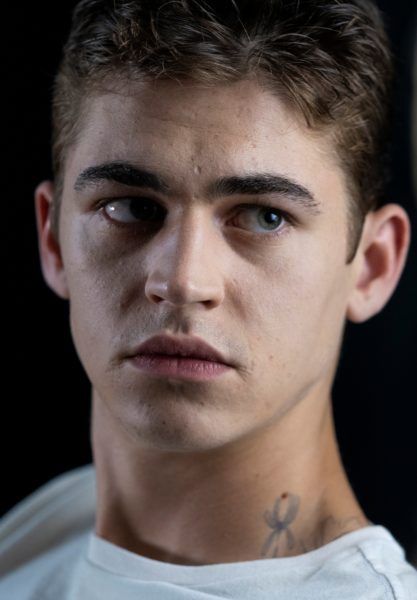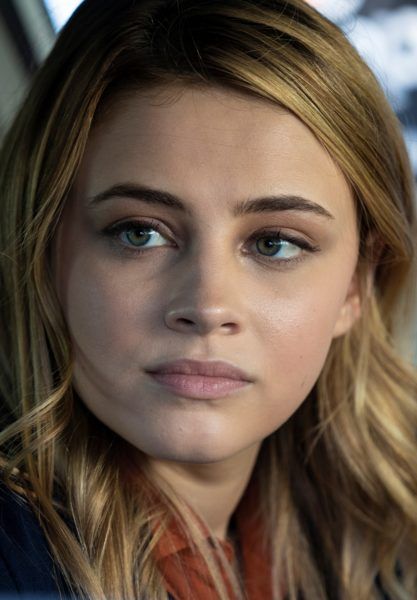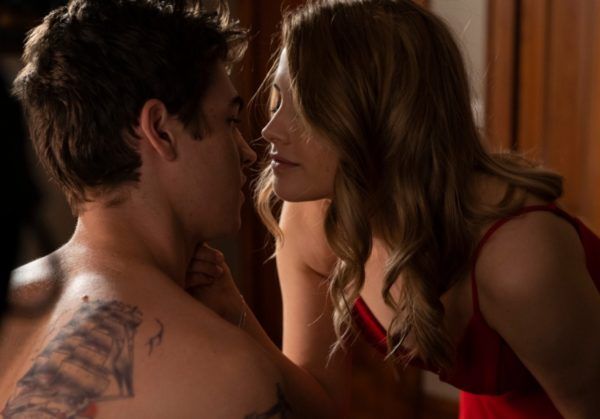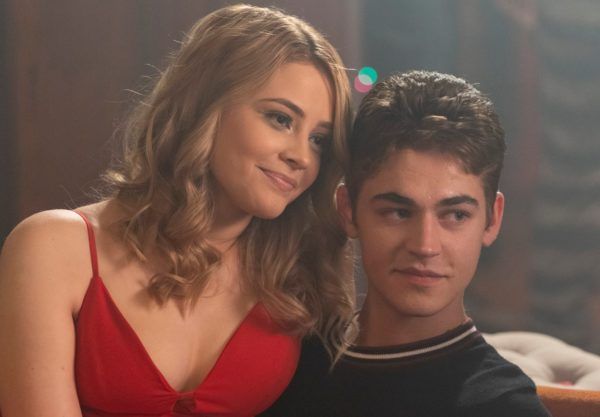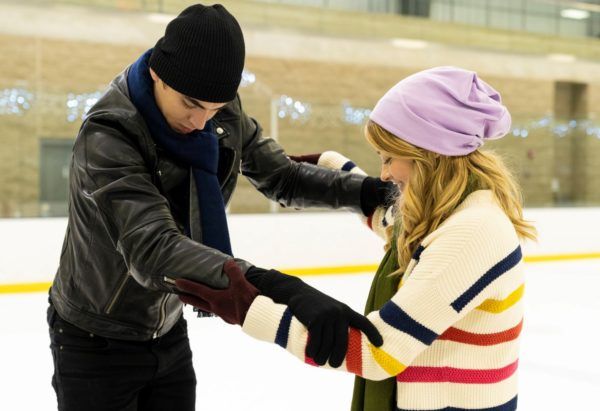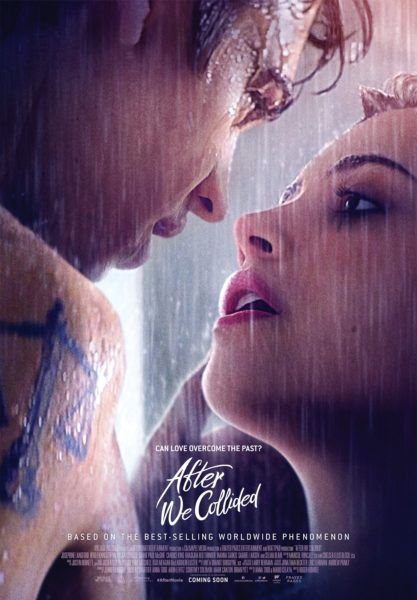The romantic drama After We Collided, based on the novel of the same name by Anna Todd who also co-wrote the screenplay, tells the continuing saga of Tessa (Josephine Langford) and Hardin (Hero Fiennes Tiffin). In the aftermath of the shocking revelation about how their relationship was started, Tessa is trying to focus on her studies and her new internship while wondering whether Hardin will ever be able to overcome his demons and prove that their love truly is real.
During this interview with Collider, co-stars Josephine Langford and Hero Fiennes Tiffin talked about returning to their roles for the After sequel, being more comfortable with each other and their characters this time around, making an R-rated sequel, the effects of childhood trauma, whether the ice skating scene or the yoga scene was more challenging, their favorite scene to shoot, the cliffhanger ending, and what they’d like to see in future films in the series.
Collider: When you did the first film, could you ever have imagined that you would not only continue getting to do these but make them so quickly after the first one?
HERO FIENNES TIFFIN: To be completely honest, and I’m sure it was the same case for Jo but we were aware because, contractually, all of those things need to be smoothed out and you know exactly what you’re tied into and how many you’re potentially allowed to come back and do. You just never know if that will become a reality. It’s just a big thank you to the fans because they’re the ones who allow us to come back and do another one so quickly. We’re super lucky to have been able to come back to do number two so soon.
What did you guys most enjoy about the opportunity to not only return to these characters but to do so now that you’ve also built your relationship with each other through the first film? Does it help to know each other better, along with knowing the characters better?
JOSEPHINE LANGFORD: Yeah. Naturally, as you get older, hopefully your acting and your sense of self is always improving. I think that’s very helpful when it comes to acting, in general, and these characters. We developed a friendship and it’s nice to be able to do stuff now where you’re in the groove. I imagine it’s like doing a TV show. You’re working with the same people and you get in a rhythm and you just get more comfortable.
Hero, does that also help you, when you’re playing a character that’s so volatile?
FIENNES TIFFIN: Yeah, one hundred percent. The fact that the ice is already broken is always nice, for obvious reasons. That goes for the crew, as well. It’s not just the cast. It’s also the whole environment and everyone that you’re working with. Once you have that dynamic, you’re all friends. We’re super lucky because the cast and crew do get on really well. That makes it not just easier but more enjoyable. It’s a great bonus to be able to have all of the same people on board, the second time around.
How different did it feel to go all in and make an R-rated film, this time? Did you always know that the rating would change with this film?
FIENNES TIFFIN: I didn’t.
LANGFORD: For the actors, it’s exactly the same. You never really know what the rating is, when you’re going into something. Usually, you just film something and it could end up being R or PG. You get a general sense with the content, what end of the spectrum it’s gonna be. If you’re doing Disney animation, it’s probably not gonna be R. For us, it’s the same. You just go in and do your job, and then the final result is what it is.
Did it feel necessary, as far as the maturity of the characters, since they definitely are at a different point?
LANGFORD: Yeah, I think the rating was different because of swearing.
FIENNES TIFFIN: I think it’s really nice to do the first one with the rating it had, so as many people can watch it as possible. And then, to do the second one with the R rating and swearing and turn it up a notch, it’s a lot more realistic. It’s nice to have that balance where you can include everyone, and then in the second, you can in my opinion, improve it on the level of authenticity towards real life and the fact that people do swear, and all of the other things that come with a higher rating. It’s just closer to real life. So, it was really good to not just have one or the other but to have that balance of both.
What do you think makes Tessa and Hardin different in this film, both individually and as a couple, and what did you enjoy about getting to explore those different aspects of them?
LANGFORD: I think that Tess is different in this film because she’s just started an internship at Vance Publishing, she’s just had her first significant heartbreak from the first significant love of her life. In this film, she’s a different girl and she’s at a different stage in her life. That girl, going into a relationship, is very different to the girl in the first movie, entering a relationship. That just changes the dynamic.
FIENNES TIFFIN: Everyone evolves and changes so much. I know I do, anyway, and the people that I know do, and it’s just nice to be able to demonstrate that. Also, the evolution of their relationship, we only told such a small chunk of it. If you think about that happening in real life, that would be such a small chunk of time in that relationship. There’s only so much of a story that you can tell. If I was watching the first one, I would be crying out for sequels because you wanna see their relationship evolve. We’re lucky to be able to do the second one. There’s more of the story to tell, so it’s great that we were able to tell it.
Hardin is bit of an emotional mess. How did find ways to relate to that aspect of him and to keep it real?
FIENNES TIFFIN: It’s funny, if I, for whatever reason, get more emotional in my own life, the silver lining when I’m shooting is that I can feed it into the character tomorrow. When there’s emotional volatility, I draw on a lot of people and, to be honest, my brother, especially in younger years. I definitely drew on him for that kind of emotional volatility. It’s always super fun to play someone who has those attributes because you can’t really do that as much in real life without having to deal with the repercussions. I can do all of that as Hardin, and then step out and not have to deal with what goes on after. I always enjoy doing that.
This is entertainment but mental health and conversations about mental health are important to have, especially with people at this age. Did you also feel an added responsibility to show that it’s okay to not be okay?
LANGFORD: That’s a really interesting take on things. I think what these books and what this story tries to do – or the way I read it – is that it’s about childhood trauma and how it affects people in different ways. Tessa has childhood trauma, and Hardin has childhood trauma. I remember there was a line in the film that we did change for mental health reasons because we spoke to someone who said that the imagery was not right, and it was just a really subtle line. We did try to be conscious of that stuff. It’s important to be.
Since it seems as though they’d both have their own challenges, was it harder to get through filming the ice skating scene or the yoga scene?
FIENNES TIFFIN: The good thing about the yoga scene is that, for me, I was supposed to be bad at it, so I didn’t have to be good. It was easy to act. The ice skating, on the flip side, was funny. I ice skated once when I was five or six, so I was enjoying trying to do it, and then I had to act like I couldn’t do it, which was funny. They do definitely both come with their challenges but I always love being able to do those scenes that involve some sort of physical activity or sport, to bring that side of the things into it. But yeah, they definitely came with their challenges, for sure. I don’t know. I’d say that the yoga was a little bit easier. It was pretty hot in there. It was hot yoga.
LANGFORD: The ice skating was the worst for me. It was two completely different climates.
Because she really did have it coming, I absolutely loved the fight between Tessa and Molly.
LANGFORD: While she had it coming, let’s not encourage physical assault here.
Not the physical confrontation aspect but she definitely had the verbal confrontation coming.
FIENNES TIFFIN: You know that when they set a character up like that, they need their comeuppance. When you see a character do something really bad that you don’t respect, you allow the story to build them up to then break them down. So, I’m with you. For me, in that storyline, it was nice for the audience to see that.
Did you have to spend a lot of time figuring out the choreography of all of that, so that nobody got hurt?
LANGFORD: We had a really wonderful stunt coordinator, Kevin [Beard], and we had doubles for the sections that we weren’t allowed to do. I wanted to do everything but I can’t. We were told how to pull on hair correctly and how to slam [each other]. It makes me very nervous because I don’t like hurting people.
With so many different things that you get to do, what was your favorite scene to shoot in this film?
LANGFORD: I keep changing my answer to that. I’m just gonna pick the scene I did with Shane [Paul McGhie], where we’re at a Christmas party. It’s not even a scene on me. We’re in the deep background. We just had to be casually chatting and we couldn’t stop laughing. It just lightens your day when you have moments like that, where you’re not really being seen but you’re still trying to hold it together.
FIENNES TIFFIN: My answer changes too, but I’d say that throwing the lamp was fun for me. I did enjoy that, I must admit.
Did you have more than one lamp, so that you could shoot that scene more than once, or did you have to get it right in one take?
FIENNES TIFFIN: I think we had three. In the first [film], I had to break a bottle, or I was fortunate enough to. That’s always fun. I hear that you can go plate smashing, so it’s definitely a common thing to like breaking stuff. I’m not weird, in that sense. It’s funny when you have three tries, you do have to make sure you get it right. I think we only needed to use one or two and we got it. I would have loved to throw it for a third time. That’s why we’ve gotta come back and make more, so that I can throw more lamps.
I would love to hear the perspective that each of you have on this relationship. Do you think that Tessa should have been more forgiving of Hardin, or do you feel that she should have been harder on him?
LANGFORD: It’s really difficult to answer that question when you’re still in it. When you start to look at the character and the situation objectively, you start judging them, and then you can’t do your job. So, I find it very difficult to try to look at things objectively.
FIENNES TIFFIN: I completely agree with that. Right now, considering that we still have the potential to hopefully make more, I still have to put myself in Hardin’s shoes with the justification. It’s a great sign that you’re even asking that because you need it to be a balance, where some people can argue for one side and some can argue for the other. I think that’s really important in this story. It is a conversation and a debate about who’s right and who’s wrong.
The first movie ended on a bit of an emotional cliffhanger while this one has a bit of a more shocking cliffhanger. How did you feel about the end of this film? What was your reaction to where the story leaves things?
LANGFORD: It’s tricky because it’s frustrating. As an audience member, when something ends on a cliffhanger, you can feel that. I think it was the right choice. That’s also their relationship. It’s always up in the air, at least until the end. It’s always, “What’s gonna happen?” I’m not sure if there’s another way we could’ve ended the second film.
At least the audience already knows that there will be more films to continue the story.
FIENNES TIFFIN: Yeah, exactly. That wouldn’t be the best ending to a self-isolated movie, with either of them. I guess we deliberately end it in a way where you have to come back. It’s tactical. We’re forcing you to come back again.
What are you most looking forward to with where the story will go next?
FIENNES TIFFIN: I guess I’m just looking for some resolution. There’s not always a happy ending and you don’t always get a resolution. That’s how real life is. A lot of what After does is try to reflect that realness. I’m excited to potentially see if they can make it work.
LANGFORD: I’m also excited for resolution. That’s a good point. I really struggle with watching shows where every episode ends and you have to watch the next one because I never feel satisfied. Sometimes I have to watch everything, just so I can finally breathe. I just wanna see these two characters with their ending, whenever that ending is.
After We Collided is out in theaters and available on digital.
Christina Radish is a Senior Reporter of Film, TV, and Theme Parks for Collider. You can follow her on Twitter @ChristinaRadish.


